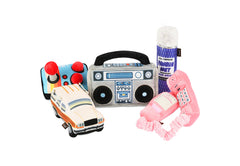National Train Your Dog Month Training Tip #9: Watch Your Tone. When training, it's important to differentiate your tone when you command, correct, or praise.
Dogs usually first respond to your tone. Even if he has a solid understanding of commands and corrections, see how your pup responds if you say "No" in a loving and exhuberant way. On the other side of the coin, see how he responds when you praise him in a lower and firm voice. Matching your tone to commands, corrections, and praise will help your dog avoid confusion.
"Grrr... what are you trying to say here?"
- Commands should be given in a firm and assertive (and often lower) tone. Many people have troubles with this because they tend to ask their dog versus command their dog. Remember, it's important to be keep your commands short and simple. Don't drag out your words. For example, don't ask your dog to "ssiiiiit?" simply tell him "Sit."
- Corrections should be more stern - usually a deeper tone. (Similar to commands, don't drag your words out.)
- Praise should be given to your dog in a warm and friendly manner. Depending on what your dog did, sometimes it's even exhuberant and excited.





